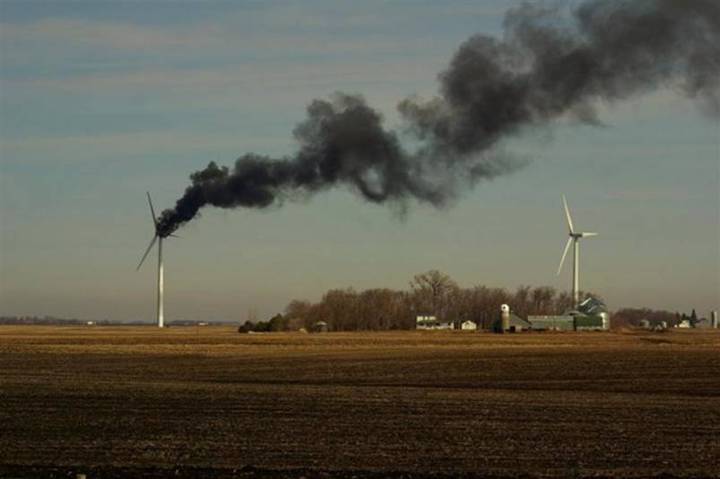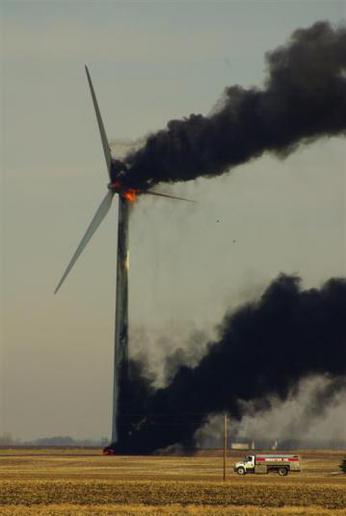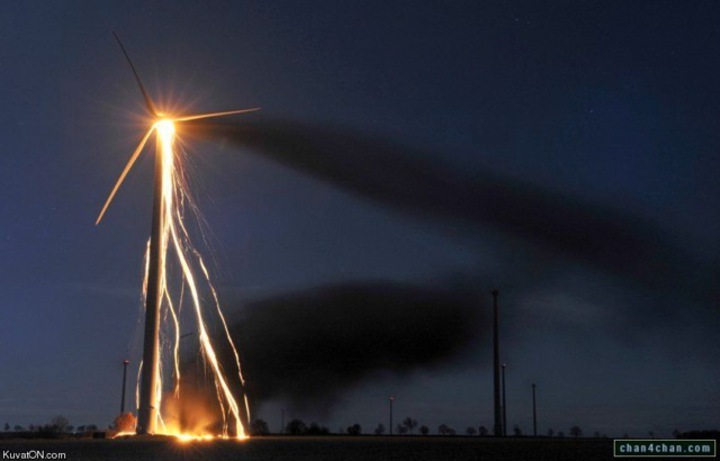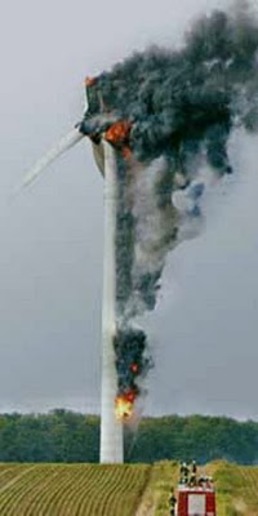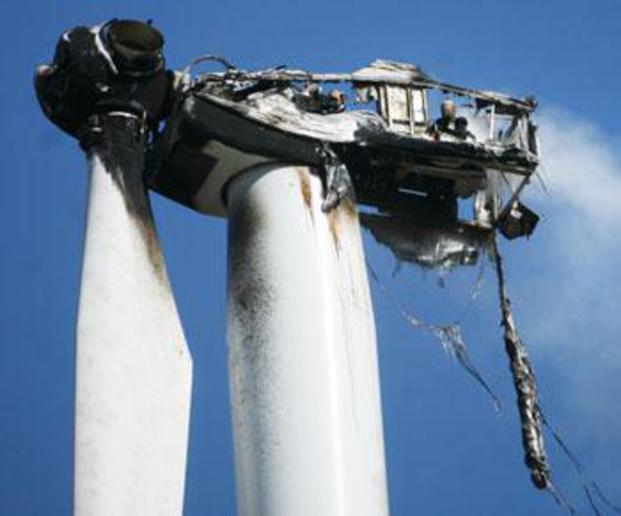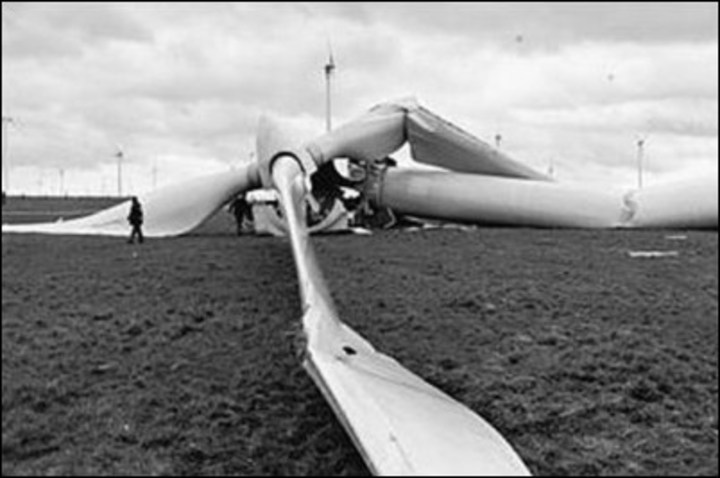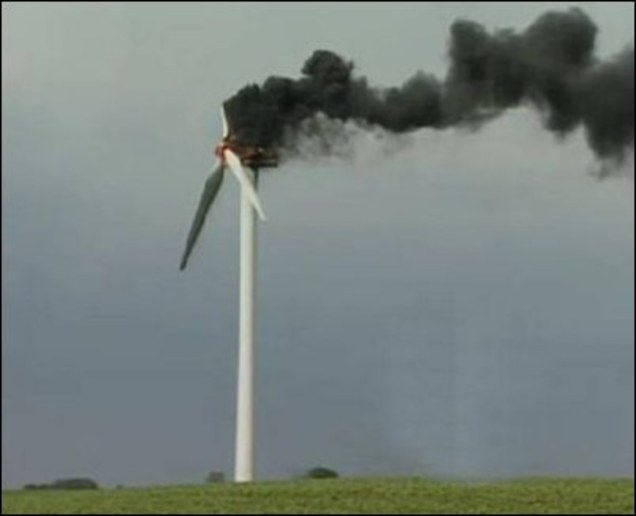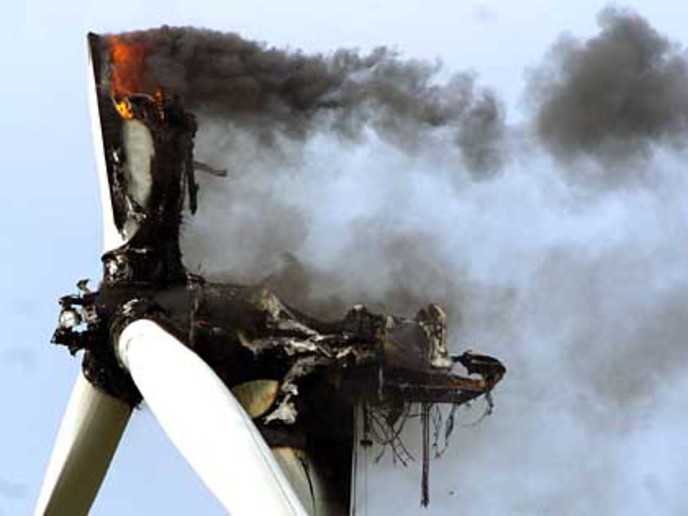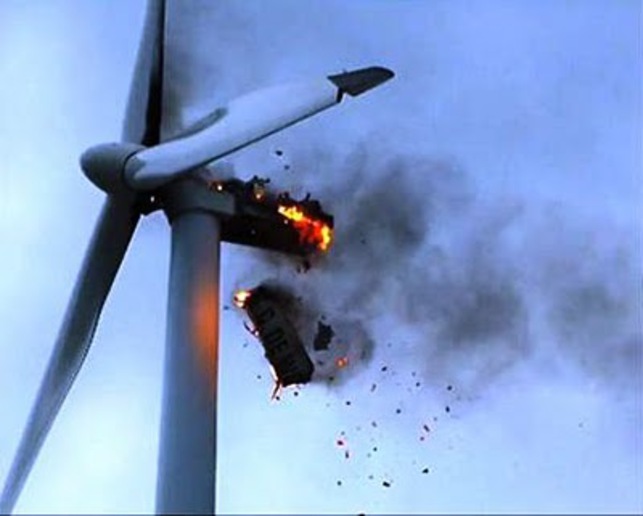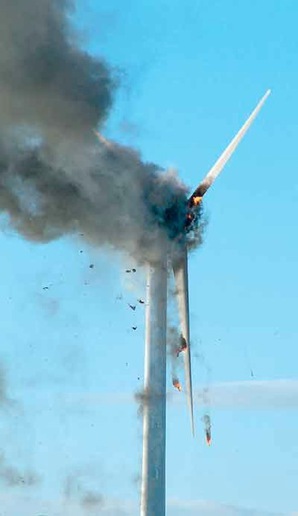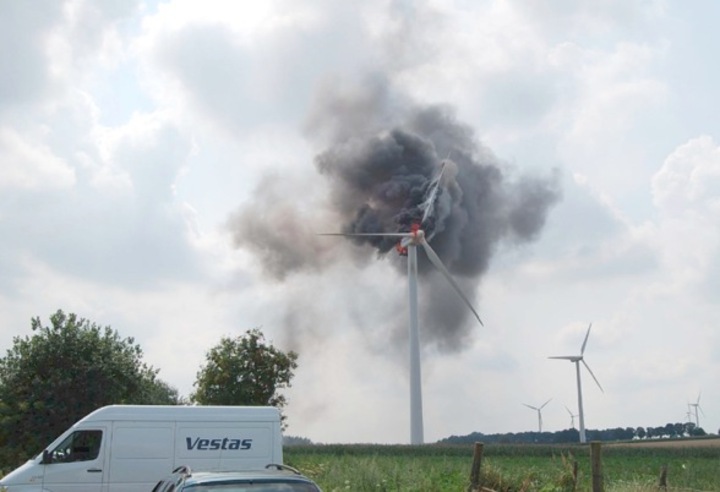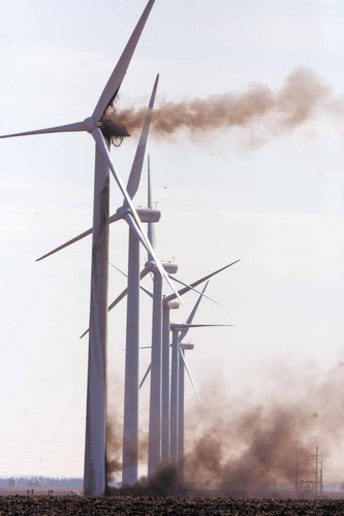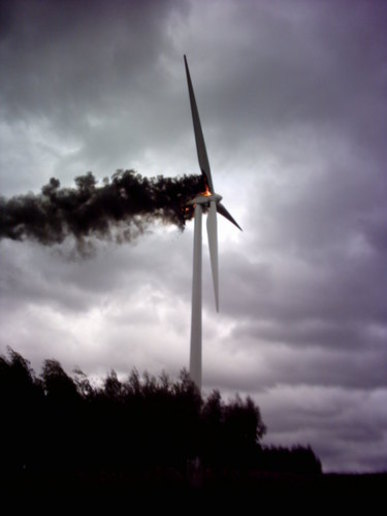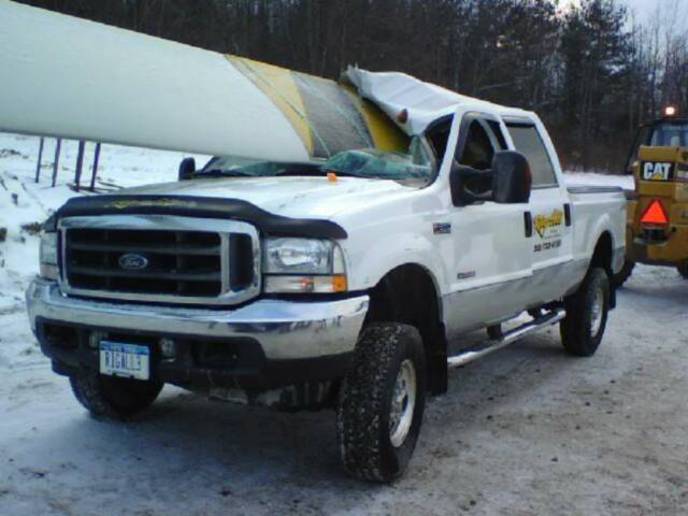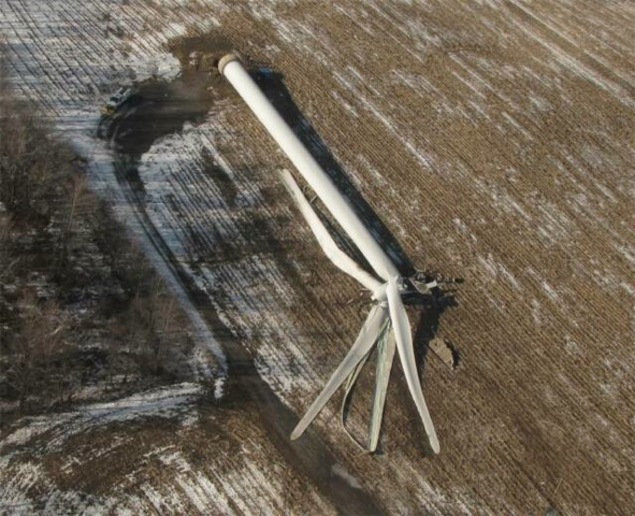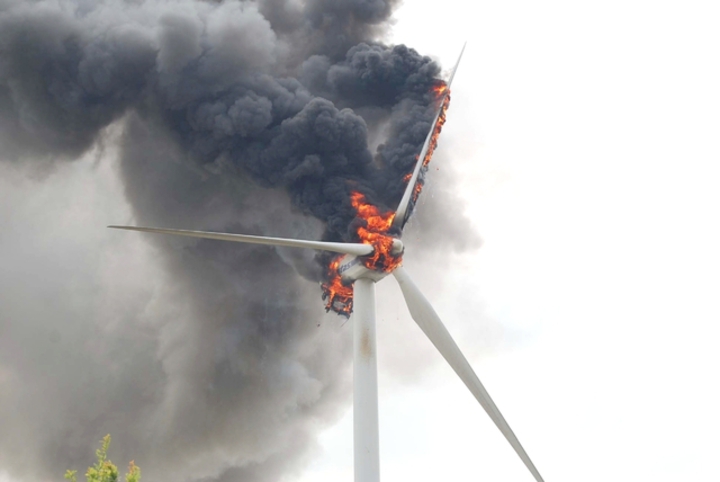You should upgrade or use an alternative browser.
- Thread starter DownSouth
- Start date
buickanddeere
Well-known Member
Considering the number of wind turbines, environment they operate in and the number of operating hours.
Wind turbine have fewer fires and incidents than combines and tractors.
Anonymous-0
Well-known Member
Anonymous-0
Well-known Member
Phil in Pa
Member
Anonymous-0
Well-known Member
Offandgone
Member
Frank
Tony in Mass.
Well-known Member
Billy Shafer
Well-known Member
Mark - IN.
Well-known Member
rockyridgefarm
Well-known Member
The pic with the blade through the truck is obviously just showing how a moron got killed by rear ending a semi hauling a blade.
Yes, I'll take 6 windmills for my farm. If anything, it'll keep the yuppie morons from wanting to subdivide and build anywhere near me.
Offandgone, downsouth surely doesn't have a clue how many mills we're seeing burning. He got this in an email and brainlessly cut and pasted it.
Bill in SW WI
Take a moment out of your busy day criticizing others and read the facts and figures, you might be surprised. Although this information is out of the UK, it is some of the most current that can be found. At least they release the information unlike our government who prefer to keep the blind sheep marching in a straight line.
Summary of Wind Turbine Accident data to 31st March 2011
These accident statistics are copyright Caithness Windfarm Information Forum 2011. The data may be used or referred to by groups or individuals, provided that the source (Caithness Windfarm Information Forum) is acknowledged and our URL www.caithnesswindfarms.co.uk quoted at the same time. Caithness Windfarm Information Forum is not responsible for the accuracy of Third Party material or references.
The attached detailed table includes all documented cases of wind turbine related accidents which could be found and confirmed through press reports or official information releases up to 31 March 2011. CWIF believe that this compendium of accident information may be the most comprehensive available anywhere.
Data in the detailed table attached is by no means fully comprehensive - CWIF believe that what is attached may only be the "tip of the iceberg" in terms of numbers of accidents and their frequency. However, the data gives an excellent cross-section of the types of accidents which can and do occur, and their consequences. With few exceptions, before about 1997 only data on fatal accidents has been found.
The trend is as expected - as more turbines are built, more accidents occur. Numbers of recorded accidents reflect this, with an average of 16 accidents per year from 1995-99 inclusive; 48 accidents per year from 2000-04 inclusive, and 104 accidents per year from 2005-10 inclusive.
This general trend upward in accident numbers is predicted to continue to escalate unless HSE make some significant changes - in particular to protect the public by declaring a minimum safe distance between new turbine developments and occupied housing and buildings (currently 2km in Europe), and declaring "no-go" areas to the public, following the 500m exclusion zone around operational turbines imposed in France.
Data attached is presented chronologically. It can be broken down as follows:
Number of accidents
Total number of accidents: 994
By year:
Year 70s 80s 90-94 95-99 00 01 02 03 04 05 06 07 08 09 10 11*
No. 1 9 17 81 30 17 70 65 59 70 82 121 128 124 97 23
* To 31 March 2011 only
Fatal accidents
Number of fatal accidents: 70
By year:
Year 70s 80s 90-94 95-99 00 01 02 03 04 05 06 07 08 09 10 11*
No. 1 8 8 7 3 1 4 4 3 5 4 9 5 5 3
* To 31 March 2011 only
Please note: There are more fatalities than accidents as some accidents have caused multiple fatalities.
Of the 78 fatalities:
55 were wind industry and direct support workers (maintenance/engineers, etc), or small turbine owner/operators.
23 were public fatalities, including workers not directly dependent on the wind industry (e.g. transport workers).
Human injury
79 accidents regarding human injury are documented.
By year:
Year 70s 80s 90-94 95-99 00 01 02 03 04 05 06 07 08 09 10 11*
No. 2 3 4 1 2 2 2 6 10 14 15 7 9 2
* To 31 March 2011 only
66 accidents involved wind industry or construction/maintenance workers, and a further 14 involved members of the public or workers not directly dependent on the wind industry (e.g. transport workers). Five of these injuries to members of the public were in the UK.
Blade failure
By far the biggest number of incidents found were due to blade failure. "Blade failure" can arise from a number of possible sources, and results in either whole blades or pieces of blade being thrown from the turbine. A total of 203 separate incidences were found:
By year:
Year 70s 80s 90-94 95-99 00 01 02 03 04 05 06 07 08 09 10 11*
No. 3 32 4 6 15 13 15 12 16 22 20 25 18 2
* To 31 March 2011 only
Pieces of blade are documented as travelling over 1300 metres. In Germany, blade pieces have gone through the roofs and walls of nearby buildings. This is why CWIF believe that there should be a minimum distance of at least 2km between turbines and occupied housing - in line with other European countries - in order to adequately address public safety and other issues including noise and shadow flicker.
Fire
Fire is the second most common accident cause in incidents found. Fire can arise from a number of sources - and some turbine types seem more prone to fire than others. A total of 158 fire incidents were found:
By year:
Year 70s 80s 90-94 95-99 00 01 02 03 04 05 06 07 08 09 10 11*
No. 1 5 3 2 24 17 15 14 12 21 17 16 9 2
* To 31 March 2011 only
The biggest problem with turbine fires is that, because of the turbine height, the fire brigade can do little but watch it burn itself out. While this may be acceptable in reasonably still conditions, in a storm it means burning debris being scattered over a wide area, with obvious consequences. In dry weather there is obviously a wider-area fire risk, especially for those constructed in or close to forest areas and/or close to housing. Two fire accidents have badly burned wind industry workers.
Structural failure
From the data obtained, this is the third most common accident cause, with 112 instances found. "Structural failure" is assumed to be major component failure under conditions which components should be designed to withstand. This mainly concerns storm damage to turbines and tower collapse. However, poor quality control, lack of maintenance and component failure can also be responsible.
By year:
Year 70s 80s 90-94 95-99 00 01 02 03 04 05 06 07 08 09 10 11*
No. 1 1 13 9 3 9 7 4 7 9 13 9 16 8 3
* To 31 March 2011 only
While structural failure is far more damaging (and more expensive) than blade failure, the accident consequences and risks to human health are most likely lower, as risks are confined to within a relatively short distance from the turbine. However, as smaller turbines are now being placed on and around buildings including schools, the accident frequency is expected to rise.
Ice throw
31 incidences of ice throw were found. Some are multiple incidents. These are listed here unless they have caused human injury, in which case they are included under "human injury" above.
By year:
Year 70s 80s 90-94 95-99 00 01 02 03 04 05 06 07 08 09 10 11*
No. 9 2 2 4 4 3 3 4
* To 31 March 2011 only
Ice throw has been reported to 140m. Some Canadian turbine sites have warning signs posted asking people to stay at least 305m from turbines during icy conditions.
These are indeed only a very small fraction of actual incidences - a report* published in 2003 reported 880 icing events between 1990 and 2003 in Germany alone. 33% of these were in the lowlands and on the coastline.
*("A Statistical Evaluation of Icing Failures in Germany"s "250 MW Wind" Programme - Update 2003", M Durstwitz, BOREAS VI 9-11 April 2003 Pyhätunturi, Finland.)
Additionally one report listed for 2005 includes 94 separate incidences of ice throw and two reports from 2006 include a further 27 such incidences.
Transport
There have been 70 reported accidents - including a 45m turbine section ramming through a house while being transported, a transporter knocking a utility pole through a restaurant, and a turbine section falling off in a tunnel. Transport fatalities and human injuries are included separately. Most accidents involve turbine sections falling from transporters, though turbine sections have also been lost at sea, along with a £50M barge.
By year:
Year 70s 80s 90-94 95-99 00 01 02 03 04 05 06 07 08 09 10 11*
No. 4 3 6 6 19 10 11 9 2
* To 31 March 2011 only
Environmental damage (including bird deaths)
86 cases of environmental damage have been reported - the majority since 2007. This is perhaps due to a change in legislation or new reporting requirement. All involved damage to the site itself, or reported damage to or death of wildlife. 34 instances reported here include confirmed deaths of protected species of bird. Deaths, however, are known to be far higher. At the Altamont Pass windfarm alone, 2400 protected golden eagles have been killed in 20 years, and about 10,000 protected raptors (Dr Smallwood, 2004). In Germany, 32 protected white tailed eagles were found dead, killed by wind turbines (Brandenburg State records). In Australia, 22 critically endangered Tasmanian eagles were killed by a single windfarm (Woolnorth). Further detailed information can be found at: www.iberica2000.org/Es/Articulo.asp?Id=3071 and at: www.iberica2000.org/Es/Articulo.asp?Id=1875.
By year:
Year 70s 80s 90-94 95-99 00 01 02 03 04 05 06 07 08 09 10 11*
No. 1 1 1 7 1 6 5 10 21 13 17 3
* To 31 March 2011 only
Other (Miscellaneous)
185 miscellaneous accidents are also present in the data. Component failure has been reported here if there has been no consequential structural damage. Also included are lack of maintenance, electrical failure (not led to fire or electrocution) and planning "accidents" where towers have been installed closer than permitted to housing, etc. Construction and construction support accidents are also included, also lightning strikes when a strike has not resulted in blade damage or fire. A separate 1996 report** quotes 393 reports of lightning strikes from 1992 to 1995 in Germany alone, 124 of those direct to the turbine, the rest are to electrical distribution network.
**(Data from WMEP database: taken from report "External Conditions for Wind Turbine Operation - Results from the German "250 MW Wind" Programme", M Durstewitz, et al, European Union Wind Energy Conference, Goeteborg, May 20-24, 1996)
By year:
Year 70s 80s 90-94 95-99 00 01 02 03 04 05 06 07 08 09 10 11*
No. 1 12 7 4 12 13 11 12 16 18 24 27 22 6
* To 31 March 2011 only
Caithness Windfarm Information Forum
31 March 2010
Summary of Wind Turbine Accident data to 31st March 2011
greenbeanman in Kansas
Well-known Member
What method of electrical generation do you accept willingly?
As a Kansan where there is a lot of wind potential I welcome the generation from wind. I've not heard of nor read about any accidents from any of the current sites, but I suppose such news would be suppressed as much as possible.
Where I live Siemens of Germany has opened a plant to build the large wind generation units called nacelles. Story link below about the first delivery.
I personally favor nuclear generated energy, either in the large plants or from one of the micro nuclear plants such as Toshiba is developing. For small quantities of off grid use a combination of photovoltaics and wind generated production.
Hutchinson News Story Nacelle Delivery
buickanddeere
Well-known Member
rockyridgefarm
Well-known Member
Nice to see you can also mindlessly cut and paste the text of said email. As greenbeanmans says - What's your preferred method of electricity generation?
Perhaps you like large, centralized nuclear power plants that can be made targets by potential terrorists?
Perhaps you like to mountaintops removed for coal?
Maybe you like fracking for natural gas?
Maybe you want to see ANWAR opened up so we can continue down the path that leads to a DEAD END and destroy more pristine areas in the process?
bobs old iron
Well-known Member
buickanddeere
Well-known Member
to hit a nuc plant are going to get.
Too bad 99.9% of the nuc info the general public
gets is B.S. rhetoric from the TV. The TV is just as
accurate portraying cops, medicine or farming too.
Want to kill a bunch of people? Get a hold of an
airplane or de-rail a freight train. City water
supplies are another.
rockyridgefarm
Well-known Member
B&D, I wasn't even considering the killing people aspect of an attack on a nuclear plant. I was talking about taking out the production capacity of a plant and destroying electrical production. It'd be a real pain to destroy many small wind mills vs. destroying one large plant. This applies to ANY large plant including hydroelectric dams, coal fired plants, natural gas plants, etc.
Anonymous-0
Well-known Member
greenbeanman in Kansas
Well-known Member
buickanddeere
Well-known Member
Then there is TV and broadcast radio RF absorption and ordinary power transmission lines.
Flying debris? Do you live under the turbine nacelle?
Ever look up the radiation you receive from milk, bananas, Coleman lanterns, tobacco smoke, granite and your wife's bones?
greenbeanman in Kansas
Well-known Member
About 90% of the time I do not have my cell phone clipped to my belt, but rather have it nearby where I can hear it ring. Not that I don't have friends and family, but I would rather email than have a phone glued to my ear so about 1 or 2 calls a week is about all I am on the phone. I basically keep it for emergencies.
As to the computer I use a PC with the tower about three feet from where I sit, and the monitor is a low watt unit that is about 30 inches away. Nice to be far sighted I guess.
As to the television it is several feet away also and uses about 80+ watts so not a great worry, especially since it isn't turned on a great deal.
As to other things----I look at it as small watt home items versus the mega watt units of wind turbines.
I would expect we are all familiar with how much the magnetic field changes with simple electro-magnets as the voltage increases. Wrap wire around a nail and give it a try with some iron filings.
I guess another example of electro magnetic fields would be with the old fluorescent bulb trick of standing under a high voltage line with one and seeing it light up and then attempting to do the same anywhere within your house.
I do agree however that we are exposed to at least some EM fields all day long generally.
buickanddeere
Well-known Member
That high voltage power line outside your house is negligible compared to the wee battery powered signal in a cell phone.
Similar threads
- Replies
- 14
- Views
- 464
- Replies
- 11
- Views
- 283
We sell tractor parts! We have the parts you need to repair your tractor - the right parts. Our low prices and years of research make us your best choice when you need parts. Shop Online Today.
Copyright © 1997-2024 Yesterday's Tractor Co.
All Rights Reserved. Reproduction of any part of this website, including design and content, without written permission is strictly prohibited. Trade Marks and Trade Names contained and used in this Website are those of others, and are used in this Website in a descriptive sense to refer to the products of others. Use of this Web site constitutes acceptance of our User Agreement and Privacy Policy TRADEMARK DISCLAIMER: Tradenames and Trademarks referred to within Yesterday's Tractor Co. products and within the Yesterday's Tractor Co. websites are the property of their respective trademark holders. None of these trademark holders are affiliated with Yesterday's Tractor Co., our products, or our website nor are we sponsored by them. John Deere and its logos are the registered trademarks of the John Deere Corporation. Agco, Agco Allis, White, Massey Ferguson and their logos are the registered trademarks of AGCO Corporation. Case, Case-IH, Farmall, International Harvester, New Holland and their logos are registered trademarks of CNH Global N.V.
Yesterday's Tractors - Antique Tractor Headquarters
Website Accessibility Policy


